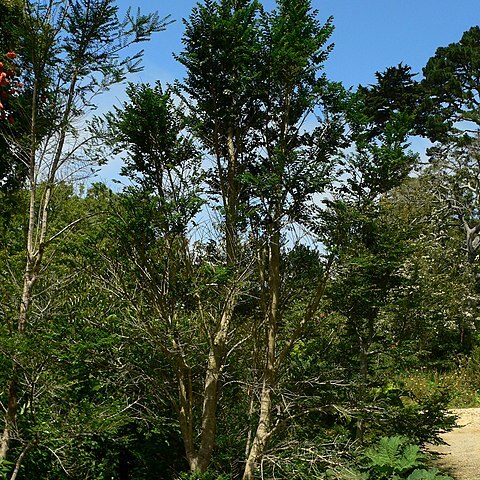An erect small evergreen tree. It grows to 6-10 m high. It is narrowly cone shaped. The bark is grey with lenticels running across it. It cracks into thin flakes. The leaves are oval and 2.5 cm long. They have small teeth and are glossy green above and paler underneath. There is a small leaf like stipule at the base. The flowers are small and in clusters. They do not have petals but have green sepals. They have yellow stamens which are easy to see. They grow in the axils of leaves. They have a vanilla smell. The fruit is a small orange-red berry.


